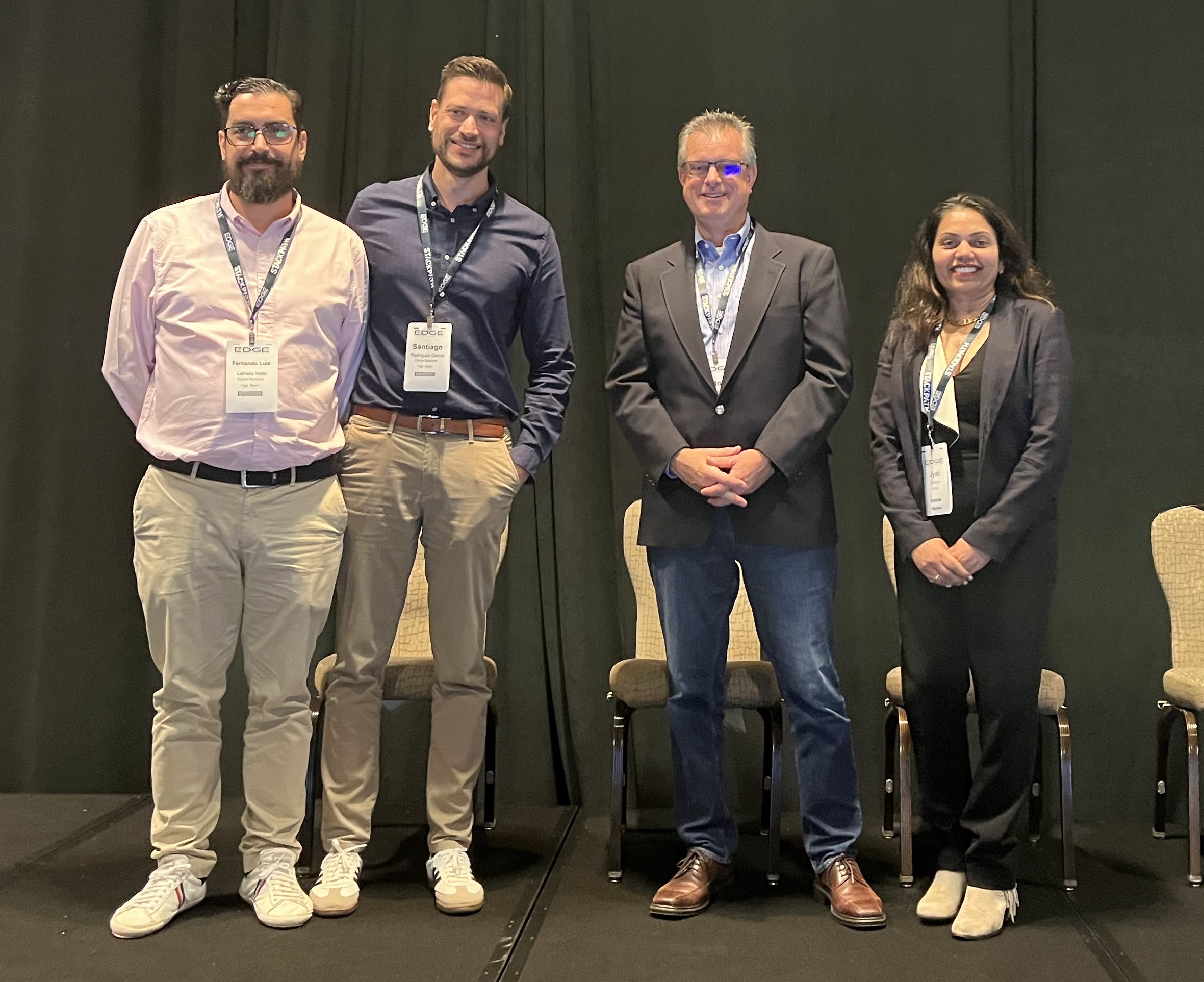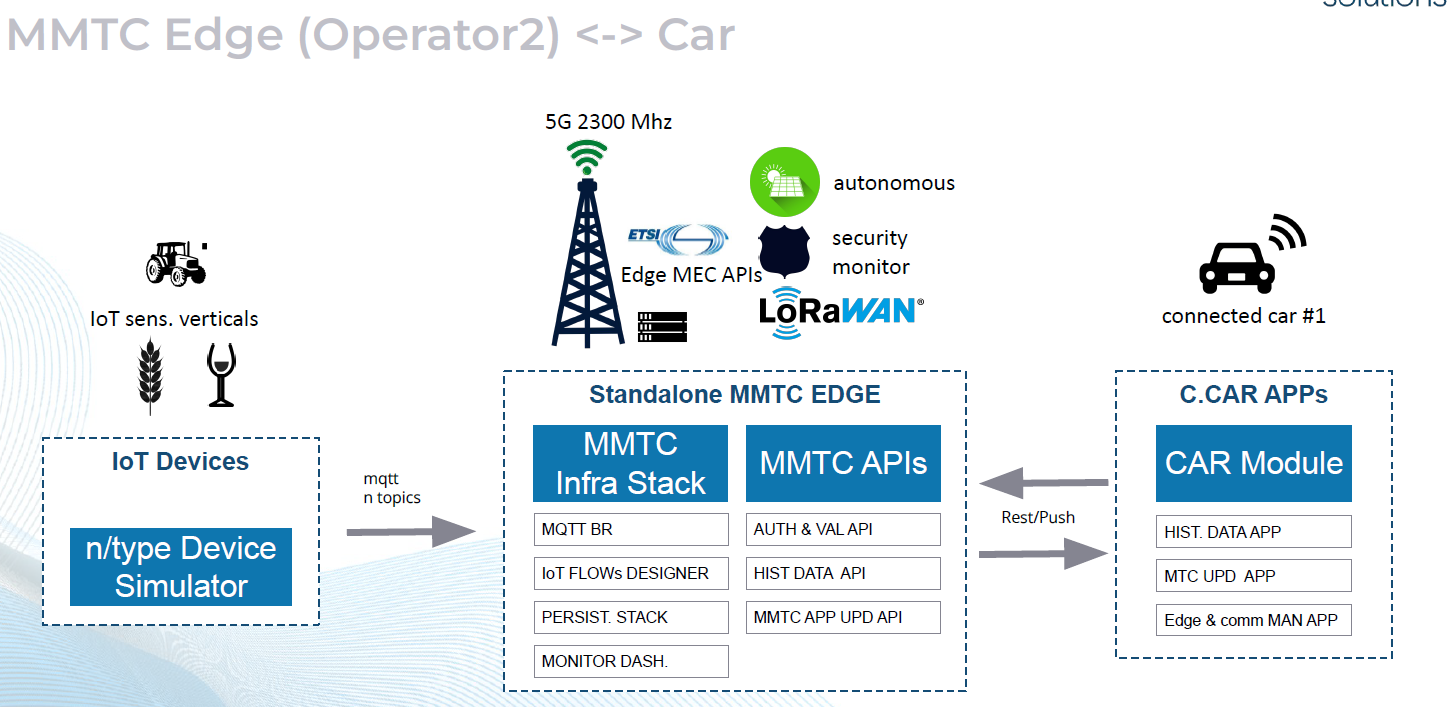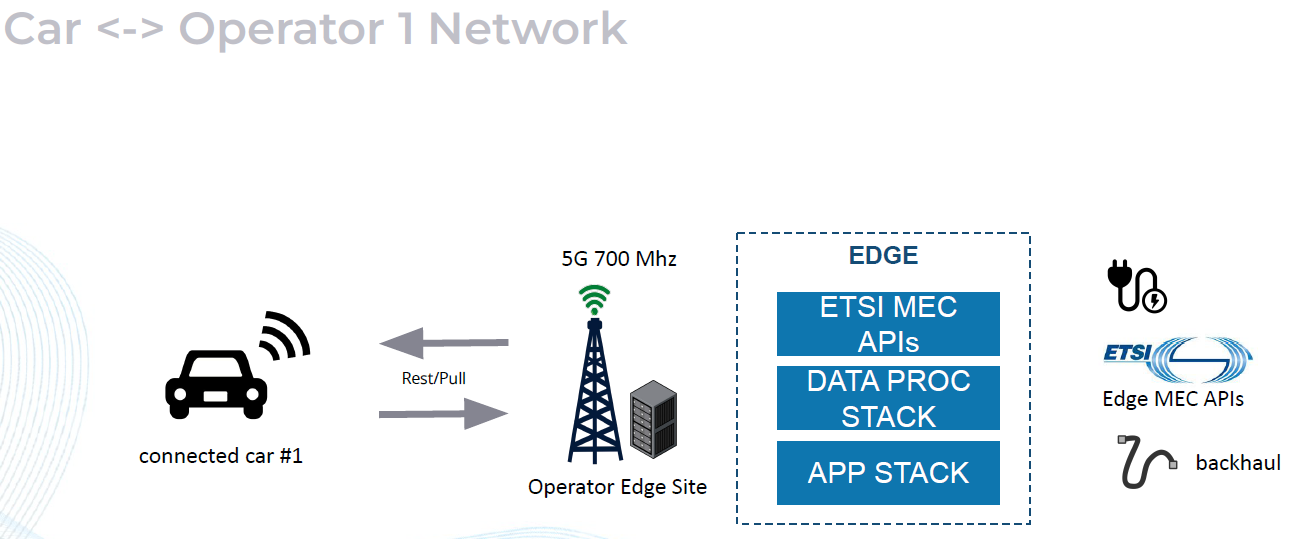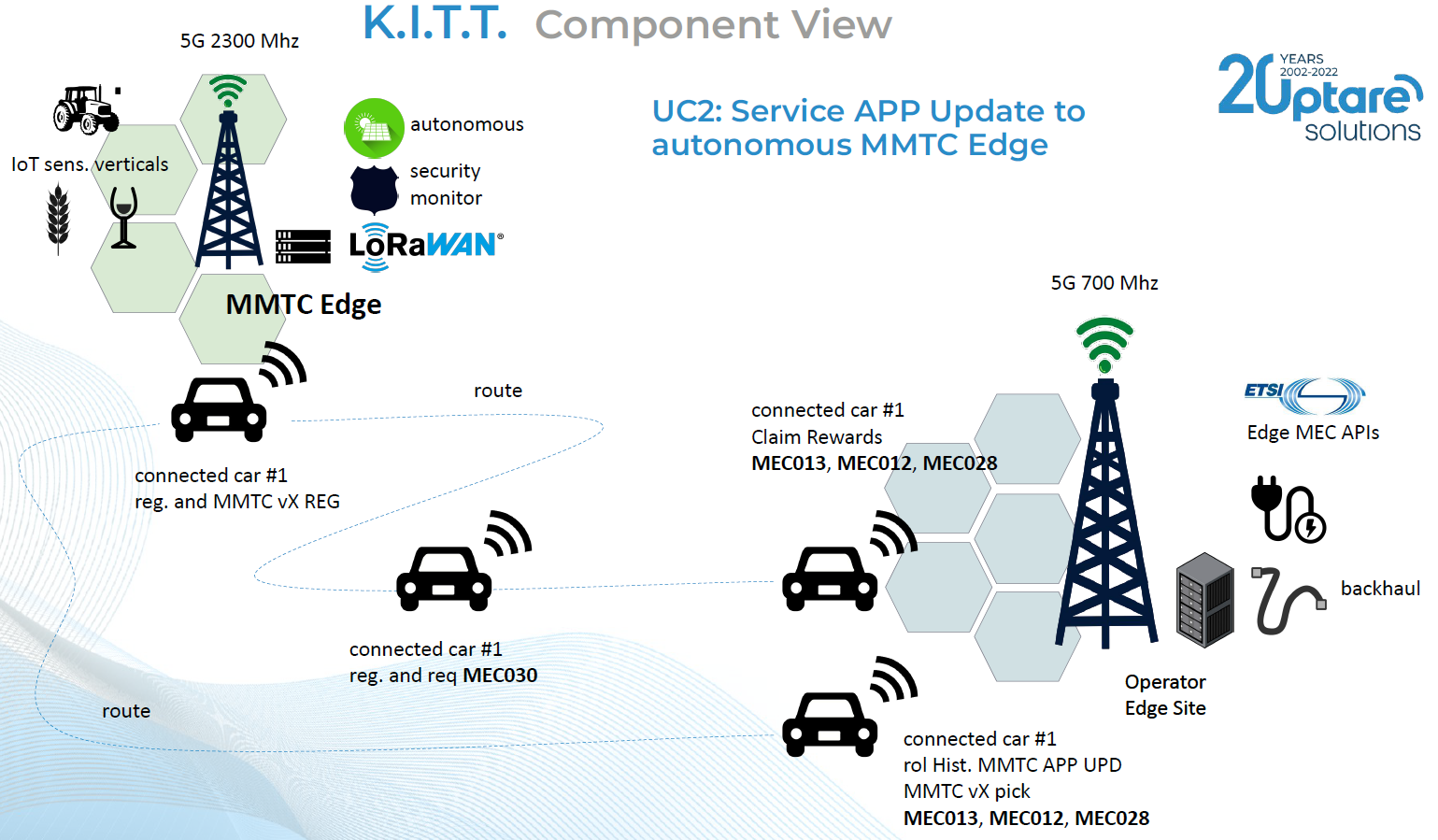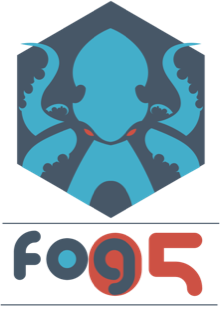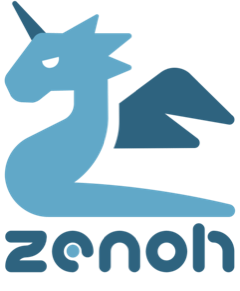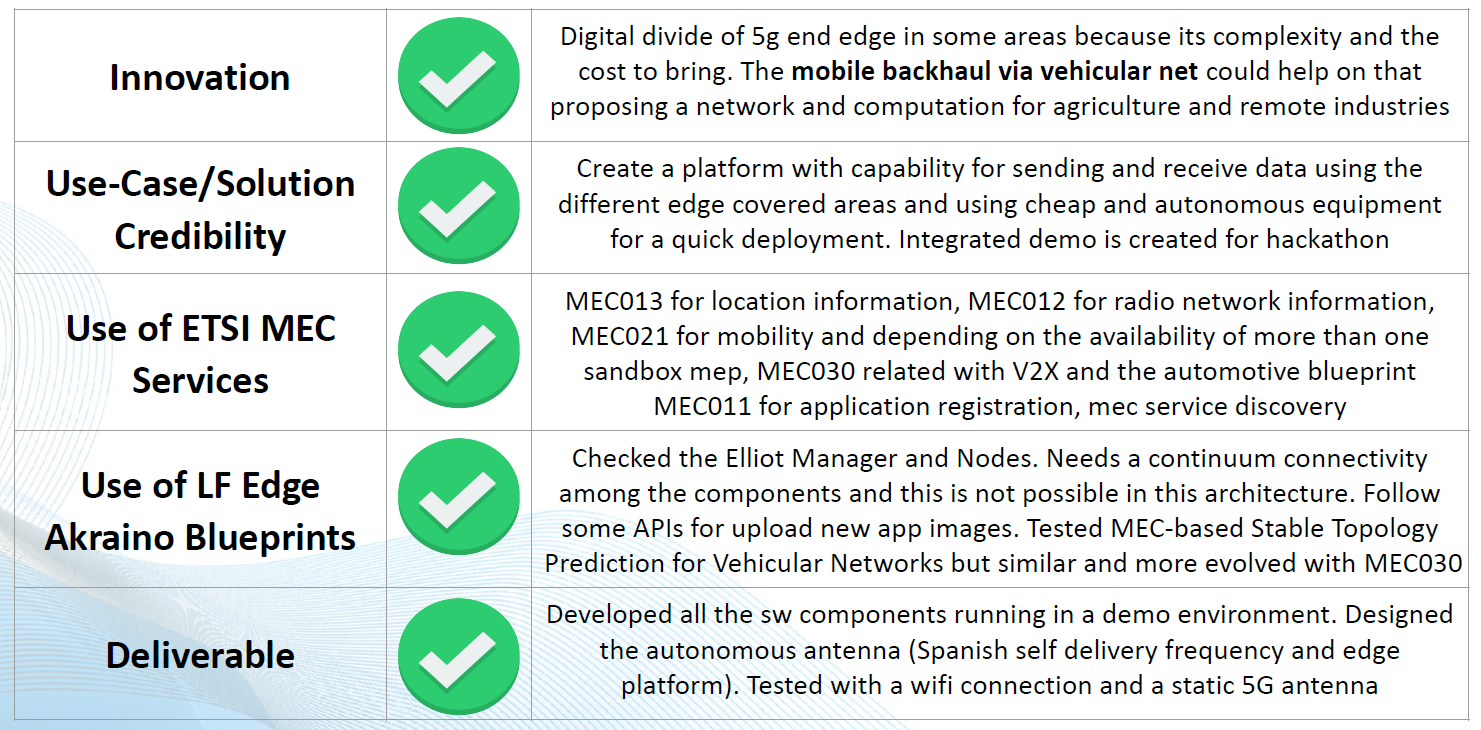Hack2022 3rd Prize
From MECwiki
3rd Prize Award & Automotive special prize
K.I.T.T Knowledge in the traffic
Team
Team Pedraforca from Optare Solutions
- Xose Ramon Sousa Vazquez
- Santiago Rodriguez Garcia
- Fernando Lamela Nieto
Introduction
- A connected vehicle (car) that with the support of 5G, MEC and artificial intelligence technologies is able to capture information from the surrounding environment and feed a smart city platform with this information which can predict and adopt several actions for the good of people.
- The information retrieved by the car and sent to the platform is collected by three different ways:
- camera: the car is equipped with a camera that sends a video stream to the edge over which is executed an AI inference algorithm to detect several patterns and generate information packages relevant to the smart city platform
- sensors: the car is equipped with several sensors (temperature, humidity, …) that can create heat maps with this information to the smart city
- the smart city itself. In regions/areas where the city information sources are isolated (low power, low signal quality, bad coverage due maintenance, weather conditions, etc), the car can act like a link between the information source and the smart city platform, uploading this information in the next available coverage area crossed by the car in its route.
- Every information contribution to the smart city could be rewarded with points that can be exchanged with tax discounts, for example, guaranteeing the participation of the people establishing missions with a different degree of value. Every connected car can register on the smart city platform and provide several information about the city and people.
Architecture
Component view
Conclusion
| Name of the project | Description | MEC Components provided | MEC APIs supported | Link | Contact |
|---|---|---|---|---|---|
| AdvantEdge | AdvantEDGE is a Mobile Edge Emulation Platform (MEEP) that runs on Docker & Kubernetes. AdvantEDGE provides an emulation environment, enabling experimentation with Edge Computing Technologies, Applications, and Services. The platform facilitates exploring edge / fog deployment models and their impact on applications and services in short and agile iterations. | MEC Platform | MEC 012 Radio Network Information MEC 013 Location MEC 028 WLAN Information |
Link | AdvantEDGE |
| Connected Vehicle Blueprint (Aka CVB) | CVB provides a V2X focused MEC platform, which offers services to connected vehicles. These services are delivered to applications hosted on vehicles based on a set of policies for data dispatch and response. As the blueprint continues to be developed, further connected-vehicle applications and services are being incorporated into the blueprint. | MEC Platform(s), MEC Platform Manager | MEC 011 Mp1 & Mm5 | Link | Yarg Yang |
| Eclipse fog05 | Eclipse fog05 provides a decentralised infrastructure for provisioning and managing compute, storage, communication and I/O resources available anywhere across the network. Eclipse fog05 addresses highly heterogeneous systems even those with extremely resource-constrained nodes. Eclipse fog05 can be used to deploy MEC Applications on centralised or distributed MEC Platforms. | MEC Orchestrator | MEC 010-2 Application descriptor information model | Link | Gitter community channel |
| Eclipse zenoh | Eclipse zenoh unifies data in motion, data in-use, data at rest and computations. It carefully blends traditional pub/sub with geo-distributed storages, queries and computations, while retaining a level of time and space efficiency that is well beyond any of the mainstream stacks. It is a perfect fit as an alternative transport protocol for MEC applications as well as technological stack to build distributed MEC platforms. | Alternative transport protocol for MEC Platform | MEC 011 Mp1 | Link | Gitter community channel |
| EdgeGallery | The EdgeGallery community focuses on providing a MEC platform framework at a carrier’s network edge, whilst adopting the de facto standard of network service openness through open source collaboration. The framework enables MEC edge resources and applications, whilst providing both security and management capabilities. It also offers interconnectivity with the public cloud. The result is the creation of unified MEC application ecosystem, which is designed to be compatible across a carrier’s heterogeneous edge infrastructure. | MEC Open Source Platform | MEC 010-2,MEC 011,MEC 009,and will support more ETSI APIs in further releases | Link | Maillist |
| Enterprise Applications on Lightweight 5G Telco Edge (EALTEdge) | Lightweight telco edge platform, enabling Enterprise applications on telco edge. Offering a: Unified Portal for platform management and for App developers; Sandbox with SDKs and tools chains for MEC app developers; Heterogeneous deployment on Multi-Arch; ETSI MEC Compliance. | MEC Platform(s), MEC Platform Manager | MEC 011 Mp1 & Mm3 | Link | Gaurav Agrawal |
| i-MEC | Italtel MEC platform i-MEC brings high value in the network enabling a wide set of services which leverage reduced end-to-end latency (uRLLC), pre-processing at the edge (mMTC) and broadband services (eMBB). i-MEC contributes to reduce the traffic load on the backhauling transport network with relevant saving of cost for the Service Operator. | MEC Platform | MEC011 Mp1, Mm5 proprietary API, Mp2 proprietary API (OpenFlow based) | Link | Italtel |
| LightEdge | LightEdge is a lightweight, ETSI-compliant MEC solution for 4G and 5G networks. It is designed to work natively on top of Kubernetes and is transparent to the existing components of a 4G network, therefore requiring zero modifications to the MNO’s environment. | MEC Platform | RNI (MEC-012), WIA (MEC-028), partially Application Enablement (MEC-011) | Link | Roberto Riggio |
| MEC Location API Simulator | The Location API simulator helps developers to create applications that use MEC Location API. It provides a MEC Location Service accessible via Location API as specified in the ETSI GS MEC013 document, available as a RESTful web service. It has a Graphical User Interface enabling developers to simulate mobile users' movements by feeding the simulator with a GPS track in .gpx format. The first release implements a subset of MEC013 API but the full set of APIs and an improved engine to simulate cars, VRU and more will be part of future releases. | MEC013 accessible APIs (with an engine to simulate mobile users’ movement) | MEC 013 Location | Link | Daniele Brevi |
| Public Cloud Edge Interface (PCEI) | The purpose of Public Cloud Edge Interface (PCEI) Blueprint family is to specify a set of open APIs for enabling Multi-Domain Inter-working across functional domains that provide Edge capabilities/applications and require close cooperation between the Mobile Edge, the Public Cloud Core and Edge, the 3rd-Party Edge functions as well as the underlying infrastructure such as Data Centers and Networks. | Provides an enabler layer that facilitates interworking between Edge Computing platforms, including Multi-Access Edge Compute, Public Cloud and 3rd-Party Edge Compute, and Mobile Networks | MEC 013 Location API | Link | Oleg Berzin |
| ServerlessOnEdge | Decentralized framework for the distribution of lambda functions to multiple serverless platforms, with Apache OpenWhisk connectors, supporting the ETSI MEC Device application interface (MEC 016). | User app LCM proxy | MEC 016 Device application interface (Mx2) | Link | Claudio Cicconetti |
| Simu5G | This open-source framework integrates an ETSI-compliant implementation of the MEC system within Simu5G, a simulator for the data plane of 5G networks. Communications with the MEC platform and the User App LCM proxy employ RESTful APIs compliant with the reference points standardized by ETSI. MEC services gather network-related information (e.g. UE location, RNI) from the simulated underlying 5G network. Moreover, thanks to the ETSI-compliant APIs and the fact that Simu5G runs as a real-time emulator, one can test real MEC apps in real time in controllable scenarios. | User App LCM proxy, MEC platform | MEC 011 Mp1, MEC 016 Mx2, MEC 012 RNI (L2meas), MEC 013 Location (UE/gNB location, circleNotificationSubscription) | Link | Giovanni Nardini, University of Pisa |
